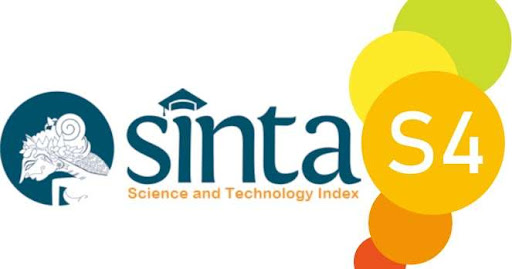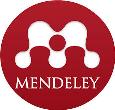Students' Ability in Speaking on YouTube Video Project
DOI:
https://doi.org/10.36733/sphota.v17i1.10264Keywords:
English Speaking Ability, EFL Students, Youtube Speaking ProjectAbstract
English speaking is an essential skill that must be learned by higher education students, in this case is the EFL students. Speaking skill is very useful and needed for their future to increase their chance in getting the future job worldwide. English is the core subject in higher education; therefore, the students must enrol to complete their studies. However, this skill is difficult to master since they do not speak English in their everyday life. This present study aims to determine the students' ability to speak on their YouTube video project. There were four components of speaking used in this study. They were Pronunciation, Fluency, Grammar, and Vocabulary. The students’ YouTube video projects were used as the data to see their ability in speaking. It was found that the highest average score is on the component of Grammar among the four components of speaking. Then, it is followed by Vocabulary, Pronunciation, and the lowest is on the Fluency component. The average score of their speaking is 72.7, hence, it can be concluded that the students’ speaking ability on their YouTube video project is in a good category. The use of YouTube in speaking is effective to improve the students’ speaking ability. Overall, this study contributes on the research of the same field on the English language teaching for EFL students in exploring the effectiveness of the technological enhancement to help the students improving their speaking skills.
References
Al Hosni, S. (2014). Speaking Difficulties Encountered by Young EFL Learners. International Journal on Studies in English Language and Literature (IJSELL), 2(6), 22–30. Retrieved from www.arcjournals.org
Amira, F., & Amri, Z. (2022). Students’ Speaking Ability on YouTube Video Project in Online Class during Covid19 Pandemic at Universitas Asahan. Proceedings of the 67th TEFLIN International Virtual Conference & the 9th ICOELT 2021 (TEFLIN ICOELT 2021), 624, 88–92. Retrieved from https://doi.org/10.2991/assehr.k.220201.016
Bahadorfar and Omidvar. (2014). Improving Speaking Ability of Senior High School Students By Using Truth or Dare Game. Journal of English Language Teaching, 7(2), 1–1. Retrieved from http://ejournal.unp.ac.id/index.php/jelt
Brown, H. D. (2004). Language Assessment. Retrieved from http://saomaidata.org/library/699.LanguageAssessment.docxNo Title
Dunbar, N. E., Brooks, C. F., & Kubicka-Miller, T. (2006). Oral communication skills in higher education: Using a performance-based evaluation rubric to assess communication skills. Innovative Higher Education, 31(2), 115–128. Retrieved from https://doi.org/10.1007/s10755-006-9012-x
Harmer, J. (2007). How to Teach English. UK: Pearson Education Limited.
Holland, M. (2016). How YouTube developed into a successful platform for user-generated content. Elon Journal of Undergraduate Research in Communications.
Irawan, A. I. (2020). the Use of Youtube As Teaching Media in Public Speaking.
Jack C. Richards. (2008). Teaching Listening and Speaking From Theory to Practice. Cambridge University Press 2008.
Kayi, H. (2006). Teaching Speaking: Activities to Promote Speaking in a Second Language. The Internet TESL Journal, XII(11), pg 1. Retrieved from http://www.iteslj.org
Konuşma, Ö., Geliştirilmesi, B., Bir, İ., Gülten Koşar, Y., & Bedir, H. (2014). International Journal of Language Academy STRATEGIES-BASED INSTRUCTION: A MEANS OF IMPROVING ADULT EFL LEARNERS’ SPEAKING SKILLS. International Journal of Language Academy, 2, 12–26.
Meinawati, E., Harmoko, D. D., Rahmah, N. A., & Dewi, N.-. (2020). Increasing English Speaking Skills Using Youtube. Polyglot: Jurnal Ilmiah, 16(1), 1. Retrieved from https://doi.org/10.19166/pji.v16i1.1954
Penny Ur. (1996). A Course in Language Teaching. United Kingdom: Cambridge University Press.
Riswandi, D. (2016). Use of YouTube-Based Videos to Improve Students’ Speaking Skill. Prooceding The 2nd International Conference On Teacher Training and Education Sebelals Maret University, 2(1), 298–306. Retrieved from www.YouTube.com,
Sari, Y. N. (2019). YouTube as a Learning Media to Improve the Student ’ s Speaking Ability in 21st Century, 4(2), 263–273.
Savitri, D., & Ardi, H. (2021). Analysis of Students’ Speaking Ability in Video Project at STKIP Muhammadiyah Muara Bungo. Proceedings of the Ninth International Conference on Language and Arts (ICLA 2020), 539(Icla 2020), 47–50. Retrieved from https://doi.org/10.2991/assehr.k.210325.009
YN Sari, M. M. (2019). YouTube as a learning media to improve the student’s speaking ability in 21st century. Journal of English Language Teaching and Linguistics.













